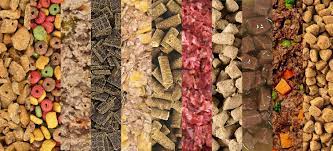All about Dog Food Introduction
As a beloved pet owner, you’ve probably wondered what goes into that bag of dog food you regularly purchase. The vibrant package claims of meaty chunks, fresh vegetables, and nutritious grains often leave us wondering: “Is it really all that it promises to be?” Let’s embark on a journey through the aisles of dog food.

1. Ingredients Matter
Like how we humans prefer fresh ingredients in our meals, dogs too benefit from quality ingredients in their food. Look for named meat sources such as “chicken” or “lamb” rather than vague terms like “animal derivatives”. And, the way, the phrase ‘made in the UK’ often indicates adherence to specific production standards.
2. Grain-Free Vs. With Grain
There’s been a lot of hullabaloo about grain-free diets, with some suggesting it’s more natural for our canine pals. However, not all grains are bad. Ingredients like rice and oats can be excellent sources of energy. Always check with your vet before hopping onto the grain-free bandwagon.
3. Wet Vs. Dry
The age-old debate of wet food versus dry food. Wet food can be beneficial for hydration and might be more enticing for picky eaters. Dry food, on the other hand, is convenient and great for dental health. A balanced combination of both might just be the ticket!
4. The Organic Movement
More than just a trend, organic dog food ensures that the ingredients used are free from synthetic chemicals, GMOs, and other undesirables. If you’re health-conscious for yourself, why not extend that care to your furry friend?
5. Special Dietary Needs
Senior dogs, puppies, active breeds, or those with specific health concerns may need specialized diets. Be on the lookout for products tailored to these needs. Remember, one size doesn’t fit all in the world of dog food!
Decoding the Dog Food Label
The label on your dog food bag is more than just flashy marketing; it’s a treasure trove of information.
1. Nutritional Adequacy Statement
This little snippet will tell you if the food meets the basic nutritional requirements set the Association of American Feed Control Officials. It’s like a seal of approval!
2. Feeding Guidelines
While not set in stone, these guidelines give a ballpark figure on how much to feed your dog based on its weight.
3. Ingredient List
Remember, ingredients are listed weight. So, if meat is the first ingredient, there’s more meat than anything else in the product. Simple, right?
FAQs
- Why is there a trend towards raw dog food?
Raw food, often termed the “BARF” diet (Biologically Appropriate Raw Food), is believed some to be more in tune with a dog’s ancestral diet. However, there’s ongoing debate regarding its benefits and potential risks. - Can I cook for my dog at home?
Absolutely! Many pet owners opt for home-cooked meals. But ensure you’re providing a balanced meal. Consulting with a vet or pet nutritionist is a good idea. - What are fillers in dog food?
Fillers are ingredients that provide little to no nutritional value. Examples include soybean hulls and certain types of cereals. They’re used to bulk up the product. - How often should I change my dog’s food brand?
It’s not necessary to change brands frequently. If your dog is healthy and enjoys its food, stick with it. However, introducing new flavors from the same brand occasionally can bring some variety. - Is “human-grade” dog food better?
“Human-grade” means the food is suitable for human consumption. While it sounds appealing, it doesn’t automatically make it superior. The balance of nutrients is more crucial. - Do dogs need dietary supplements?
In most cases, a balanced dog food provides all the necessary nutrients. However, certain health conditions might require supplements. Always consult with your vet.
Conclusion
Choosing the perfect food for your furry friend might seem daunting, especially with the plethora of choices available in the UK market. But, armed with knowledge and a bit of research, it becomes a walk in the park (pun intended). After all, as they say in the realm of all about dog food it’s all about capturing the essence, and the same goes for capturing the nutritional essence for our pets. Always prioritize quality, balance, and your dog’s specific needs. Happy feeding!
Thanks for dropping Supermarket near me open
REFERENCES –
- The UK Pet Food Manufacturers Association
- An association that provides guidance, research, and best practices for pet food manufacturing in the UK.
- Dog Nutrition Studies – University of Liverpool
- A comprehensive resource on the latest research studies on dog nutrition conducted at the University of Liverpool.
- Canine Dietary Guidelines
- An educational website providing guidelines on what constitutes a balanced diet for dogs.
